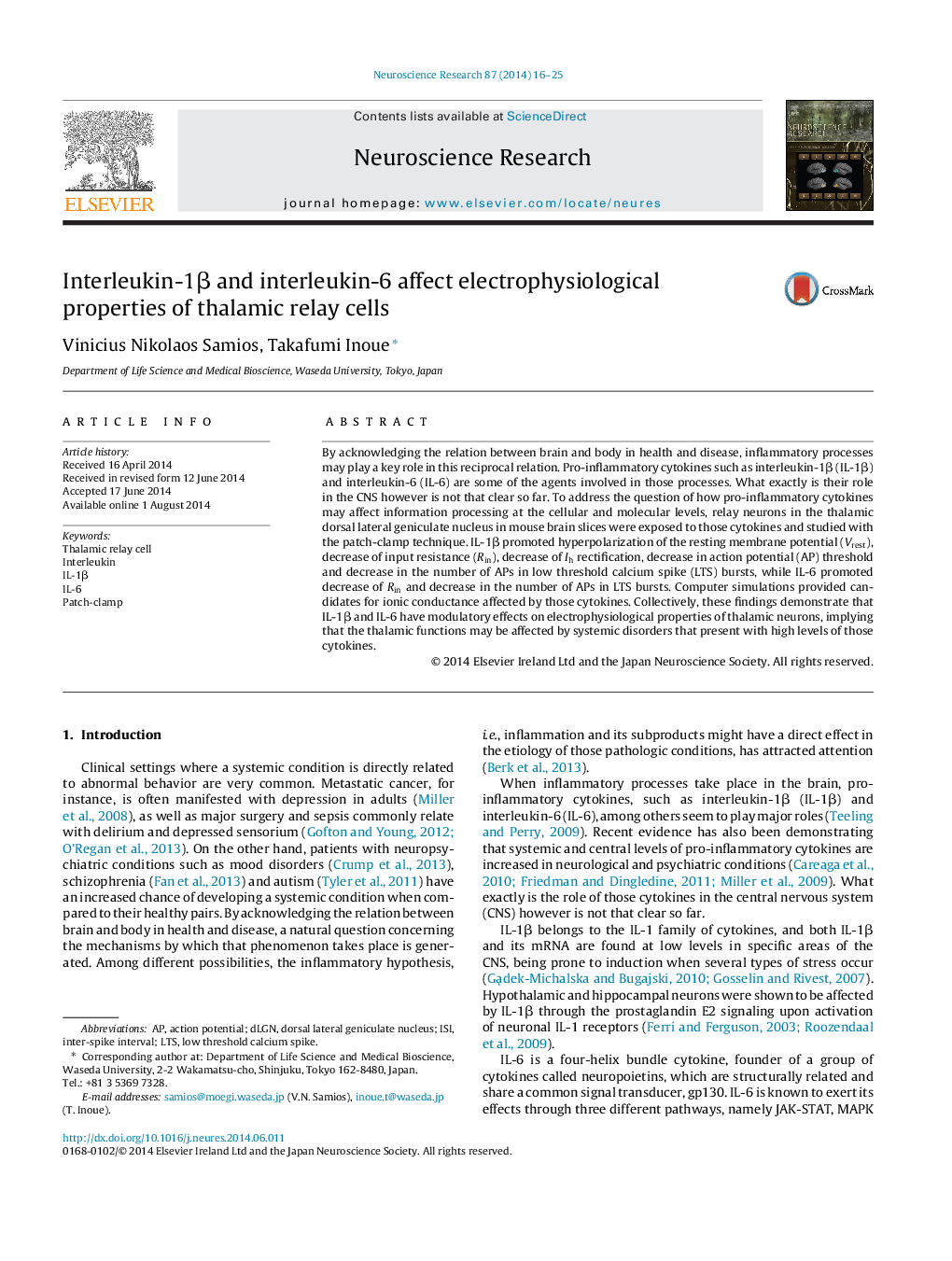| Article ID | Journal | Published Year | Pages | File Type |
|---|---|---|---|---|
| 6286181 | Neuroscience Research | 2014 | 10 Pages |
â¢We examined actions of cytokines on relay neurons in murine thalamic slices.â¢IL-1β and IL-6 showed different modulatory effects on membrane conductance.â¢A simulation study predicted candidates for modulated ion conductance.
By acknowledging the relation between brain and body in health and disease, inflammatory processes may play a key role in this reciprocal relation. Pro-inflammatory cytokines such as interleukin-1β (IL-1β) and interleukin-6 (IL-6) are some of the agents involved in those processes. What exactly is their role in the CNS however is not that clear so far. To address the question of how pro-inflammatory cytokines may affect information processing at the cellular and molecular levels, relay neurons in the thalamic dorsal lateral geniculate nucleus in mouse brain slices were exposed to those cytokines and studied with the patch-clamp technique. IL-1β promoted hyperpolarization of the resting membrane potential (Vrest), decrease of input resistance (Rin), decrease of Ih rectification, decrease in action potential (AP) threshold and decrease in the number of APs in low threshold calcium spike (LTS) bursts, while IL-6 promoted decrease of Rin and decrease in the number of APs in LTS bursts. Computer simulations provided candidates for ionic conductance affected by those cytokines. Collectively, these findings demonstrate that IL-1β and IL-6 have modulatory effects on electrophysiological properties of thalamic neurons, implying that the thalamic functions may be affected by systemic disorders that present with high levels of those cytokines.
